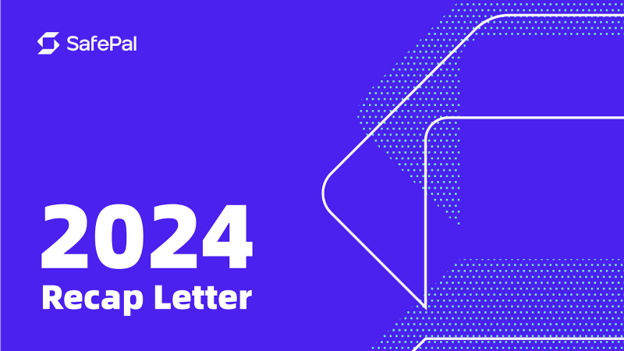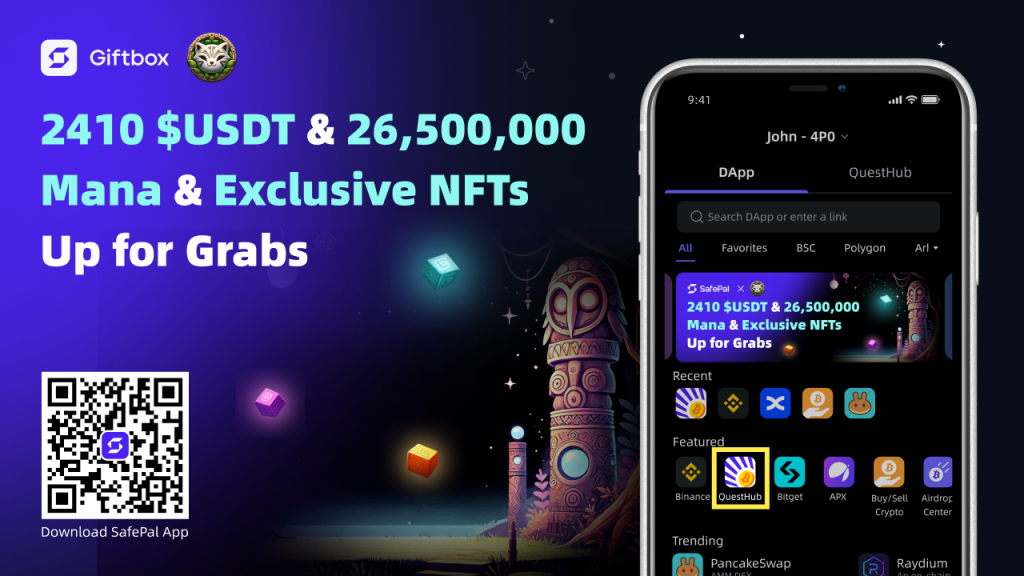
In the world of cryptocurrency, security is paramount, and scammers are always looking for new ways to trick users into losing their funds. One such method involves manipulating the ability to monitor wallet addresses due to the transparency of blockchain and lack of user knowledge. This blog post will explain how scammers exploit such features (i.e. The observation mode in SafePal wallet) and provide tips on protecting yourself from falling victim to such scams. For reference, here is an example of this typical scam.
What is the Observation Mode feature for SafePal Wallet?
SafePal is a decentralized and non-custodial wallet that allows users to store and manage their cryptocurrencies securely. One of its features is the Observation Mode, which enables users to view the balance and transaction history of a specific wallet address without being able to send or receive any funds. This is due to the transparency of blockchain which allows the asset balance of any on-chain wallet address to be viewable with blockchain explorers and other tools – although the identity of the wallet owner remains anonymous unless he/she has publicly linked it to any social profile.
The following figure is a comparison between the observation wallet mode and the normal wallet homepage(the first screenshot is an observation wallet and the second screenshot is a normal wallet). It can be found that the observation wallet only allows viewing the balance, but there are no operations such as transferring money.
Observation Mode is useful for tracking and monitoring funds, but it does not allow users to make any transactions or equate to access or ownership of that specific wallet address. Only users with the private key/seed phrase for the wallet address are able to access and manage assets in the wallet address -and it is this lack of understanding and knowledge that scammers exploit.
How the Scam Works
Scammers manipulate users into thinking they have access to the funds of a wallet address (often a wallet owned by the scammer with a large amount of funds) and need to make transactions to unlock their funds, although in reality they are only viewing the wallet balance without any access or ownership. Here’s a breakdown of how this scam typically works:
Scammer Approaches the User: The scam begins when a fraudster impersonates a member of the SafePal support team. They often contact users via social media platforms, such as Twitter, Telegram, or Reddit, and initiate the conversation by offering “assistance” with an issue related to the SafePal wallet. Some scammers may even post “fake help posts” online, saying something like “I’m having problems with my money and can’t withdraw it. Is there anyone who can help me withdraw it? I’m willing to reward you handsomely.”
The Fake Support Message: The scammer claims that the user’s SafePal wallet needs to be “verified” or “upgraded” in order to access their funds. They often provide instructions to download the official SafePal wallet app from the app store, making it appear as though they are guiding the user through a legitimate process.
Importing the Wallet Address: The scammer then asks the user to import their wallet address into the SafePal app under the observation mode. This allows the user to see the wallet’s balance, which may appear to contain a large amount of cryptocurrency.
The scammer will proceed to claim that the user will need to pay a gas fee or deposit additional cryptocurrency into the designated wallet address. This is a trick to make the user believe they are required to pay a fee to unlock the funds in that wallet address.
Stealing the Funds: Once the user sends the requested funds to the scammer’s address, they will not receive anything in return, and the scammer disappears. In other instances, the scammer may continue to ask for more funds to be deposited or transferred into the wallet address under other false pretenses or promises.
Why This Scam Works
The scam works because users often do not fully understand how that all wallet addresses are trackable due to the transparency of blockchain. Seeing a balance in a wallet address (with blockchain explorers, or features like observation mode in the SafePal wallet) may give the misunderstanding for inexperienced users that this equates to access or ownership of the wallet, while in reality it is only viewing and nothing more.
How to Protect Yourself
If you are using SafePal or any other decentralized or non-custodial wallets, it’s essential to be aware of the following safety tips to avoid falling for these scams:
- Do Not Trust Unsolicited Messages: SafePal’s official team will never reach out to users via social media or direct messages (DMs). Any unsolicited message offering help or asking for personal information should be treated with extreme caution.
- Understanding Observation Mode or the Viewing of On-chain Wallet Addresses: Remember, Observation Mode or the monitoring of asset balances in a wallet address is a view-only feature. It allows users to track the balance and transaction history of a wallet but does not allow any transfers or withdrawals (The private key/seedphrase for a designated wallet address is required to actually access it). You cannot move funds from a wallet in Observation Mode, so if someone asks you to “unlock” or “access” your funds, it’s a scam.
- Avoid Sending Funds to Unknown Sources: If someone asks you to send funds to an address in order to “release” your cryptocurrency, this is a red flag. Scammers often demand a Gas fee or other payments, but legitimate services will never ask you to send money to an address in order to access your funds.
- Only Download Apps from Official Sources: Make sure you download the SafePal wallet app only from official app stores, such as the Google Play Store or Apple App Store. Avoid downloading apps from unverified sources, as these could be malicious.
- Report Suspicious Activity: If you encounter a suspicious message or a potential scam, report it immediately to the platform (e.g., SafePal’s official support channels by opening a ticket here). This helps protect the community and prevent others from falling victim to similar scams.
Final Thoughts
Cryptocurrency scams are on the rise, and scammers are becoming increasingly sophisticated in their tactics. By understanding how blockchain and self-custody works, and being aware of common scam techniques, you can better protect yourself from falling victim to these fraudulent schemes.
Always remember: SafePal will never ask for your private keys, recovery phrase, or any personal funds. If you’re ever unsure about a situation, reach out directly by contacting the support team (via the Contact Customer Support tab) or the official social channels at www.safepal.com/sitemap .
About SafePal:
Founded in 2018, SafePal is a next generation non-custodial crypto wallet suite backed by Animoca Brands, Binance and Superscrypt. The suite empowers access to decentralized and centralized finance on 100+ blockchains across its hardware, software, and browser extension wallet solutions.
Encompassing a diverse mix of crypto asset management solutions like cross-chain swapping, trading and yielding tools, centralized exchange (CEX) mini programs, a banking gateway and Visa card for users — SafePal serves over 18 million users globally across 200+ regions and countries in 16 languages.
SFP is a decentralized BEP-20 and ERC-20 token fuelling the SafePal ecosystem with various utilities such as discounts on SafePal products, staking boost and airdrop rewards, seamless conversion to gas tokens, and more.
Stay informed about SafePal here









